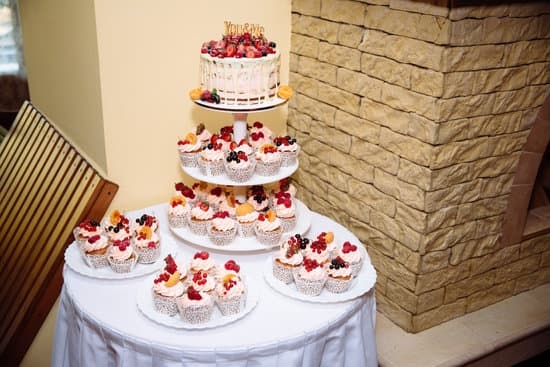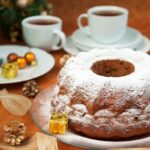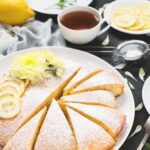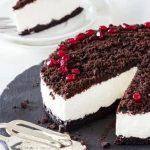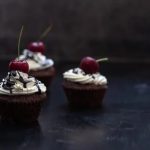Cake decorating has evolved over the years, with new techniques constantly emerging to elevate the artistry of sweet creations. One such trend that has gained popularity in recent years is using an airbrush for cake decorating. This article will delve into how to use airbrush for cake decorating, offering insights into the benefits, types of airbrushes available, essential supplies needed, a step-by-step guide, tips and tricks for achieving professional results, creative techniques, and proper maintenance practices.
Airbrushing offers a level of precision and control that traditional methods may lack, allowing decorators to achieve intricate designs and seamless gradients with ease. By harnessing the power of compressed air and specialized food coloring, decorators can create stunning works of edible art that stand out from the crowd.
Whether you’re a beginner looking to enhance your skills or an experienced decorator wanting to explore new avenues of creativity, incorporating airbrushing into your repertoire can take your cakes to the next level.
In this comprehensive guide, we will cover everything you need to know about using an airbrush for cake decorating. From selecting the right type of airbrush for your needs to mastering essential techniques and maintaining your equipment for longevity, this article aims to equip you with all the knowledge and tools necessary to embark on your airbrushing journey. Stay tuned as we dive deeper into this increasingly popular trend in the world of cake decoration.
Benefits of Using an Airbrush for Cake Decorating
Airbrushing has gained popularity in the cake decorating world due to its versatility and ability to create stunning designs with precision and ease. One of the significant benefits of using an airbrush for cake decorating is the control it offers. Unlike traditional methods like piping or hand painting, an airbrush allows decorators to have precise control over the intensity and coverage of color on the cake surface. This results in more consistent and professional-looking decorations.
Another advantage of incorporating airbrushing into your cake decorating skills is the time-saving aspect. With an airbrush, you can quickly cover large areas of a cake with color or create intricate designs in a fraction of the time it would take with traditional methods. This efficiency is especially beneficial for decorators working on tight deadlines or creating elaborate designs that require meticulous detailing.
Furthermore, airbrushing provides decorators with a wider range of techniques and effects that may be challenging to achieve using other decorating methods. From creating gradients and shadows to adding textures and patterns, an airbrush opens up a new realm of creative possibilities for cake decorators. By mastering how to use airbrush for cake decorating, decorators can elevate their craft and bring their edible creations to life in ways that were once unimaginable with traditional tools alone.
Types of Airbrushes for Cake Decorating
When it comes to choosing the right airbrush for cake decorating, there are several options available in the market. Each type of airbrush has its own unique features and benefits that cater to different skill levels and preferences. Understanding the differences between these airbrushes is essential in order to make an informed decision on which one will best suit your needs.
Single-Action Airbrush
A single-action airbrush is a great option for beginners or those who are new to using an airbrush for cake decorating. With this type of airbrush, the airflow and paint release are controlled by a single button, making it easier to use and less intimidating for beginners. Single-action airbrushes are suitable for basic designs and can provide consistent results with minimal effort.
Dual-Action Airbrush
For more advanced cake decorators looking for greater control and precision, a dual-action airbrush is recommended. With a dual-action airbrush, you have separate control over both the airflow and paint release, allowing you to create more intricate designs and fine details on your cakes. This type of airbrush requires more practice and skill to master but offers a higher level of customization in your cake decorating projects.
Gravity-Feed vs Siphon-Feed Airbrushes
Another important consideration when choosing an airbrush for cake decorating is whether to opt for a gravity-feed or siphon-feed design. Gravity-feed airbrushes have the paint cup positioned on top of the airbrush, allowing gravity to feed paint into the nozzle smoothly.
These are ideal for small-scale projects or detailed work where precise color control is crucial. On the other hand, siphon-feed airbrushes have a larger paint cup attached underneath the nozzle, making them suitable for larger areas that require more coverage.
By understanding the differences between single-action and dual-action airbrushes as well as gravity-feed versus siphon-feed designs, you can select the right type of airbrush that aligns with your skill level, project requirements, and personal preferences when using an
Essential Supplies for Airbrushing
When it comes to using an airbrush for cake decorating, having the right supplies is essential to achieve professional-looking results. Here is a list of necessary tools and materials you’ll need to ensure successful airbrushing on your cakes.
1. Airbrush: The most important tool for airbrushing, choose a high-quality airbrush specifically designed for use with food colors. Look for one with adjustable pressure settings to give you more control over the flow of color.
2. Air Compressor: An air compressor is needed to power your airbrush. Make sure to select a compressor that is compatible with your airbrush and provides consistent airflow for even coverage.
3. Food-Safe Colors: Use specially formulated food-safe colors made for airbrushing cakes. These colors come in a wide range of shades and are safe to consume, ensuring that your creations not only look great but are also edible.
4. Color Palette: Have a selection of different colored food dyes ready for mixing and creating custom shades. This will allow you to achieve the exact colors you desire for your cake designs.
5. Cleaning Supplies: Keep your airbrush clean and well-maintained by having cleaning brushes, cleaning solution, and disposable droppers on hand. Regular cleaning will help prevent clogs and ensure the longevity of your equipment.
By having these essential supplies at your disposal, you’ll be well-equipped to begin experimenting with different airbrushing techniques and creating stunning cake designs that will impress everyone who sees them. Experiment with different colors, textures, and patterns to take your cake decorating skills to the next level using this amazing tool – the airbrush.
Step-by-Step Guide on How to Use an Airbrush for Cake Decorating
Airbrushing is a versatile and innovative technique that can truly elevate your cake decorating skills. Learning how to use an airbrush for cake decorating can open up a world of possibilities in creating unique and professional-looking designs. Whether you are a beginner or an experienced baker looking to enhance your creations, mastering the art of airbrushing is a valuable skill to have.
To start using an airbrush for cake decorating, you will need to gather the necessary supplies. Apart from the airbrush itself, you will need edible food coloring specifically designed for airbrushing, an air compressor, stencils (if desired), cleaning tools, and of course, your baked and cooled cake ready for decoration. Ensure that your work area is well-ventilated to prevent inhalation of any particles during the airbrushing process.
| Steps | Details |
|---|---|
| Set up Airbrush | Attach nozzle & needle, connect to compressor, adjust airflow & pressure settings. |
| Mix Colors | Mix edible food colors with thinning agent for desired consistency. |
| Practice | Experiment with color combinations on test surfaces before airbrushing cake. |
Mastering these basic steps on how to use an airbrush for cake decorating will set you on the path towards creating stunning cakes that stand out from traditional designs. Practice makes perfect when it comes to airbrushing techniques, so don’t be afraid to experiment with different patterns, textures, and color gradients on your cakes. With patience and dedication, you can achieve professional results that will impress both clients and guests alike.
Tips and Tricks for Perfect Airbrushing
Airbrushing is a versatile and creative technique that can take your cake decorating skills to the next level. To achieve professional-looking results, it is essential to master the art of using an airbrush effectively. Here are some expert tips and tricks on how to use airbrush for cake decorating:
- Practice Makes Perfect: Before attempting to airbrush a cake, it is important to practice on a piece of paper or cardboard to get a feel for the pressure and control of the airbrush.
- Layering Colors: To create depth and dimension in your designs, practice layering different colors by starting with lighter shades and gradually building up to darker tones.
- Distance Matters: The distance between the airbrush nozzle and the cake surface plays a crucial role in achieving smooth and even coverage. Experiment with various distances to find what works best for you.
Troubleshooting common issues that may arise during airbrushing is also essential for achieving flawless results. Here are some common problems and their solutions:
- Clogging: If your airbrush nozzle gets clogged, try cleaning it with warm water or a specialized cleaning solution designed for airbrush equipment.
- Overspray: To avoid overspray, try adjusting the airflow or using stencils to control the direction of the color application.
- Uneven Coverage: If you notice uneven coverage while airbrushing, adjust the pressure settings on your compressor or practice making smoother strokes for consistent results.
By following these tips and tricks, you can enhance your cake decorating skills with the use of an airbrush and create stunning designs that will impress your friends, family, and clients alike. Remember, practice makes perfect, so keep honing your skills and experimenting with new techniques to become a master at using an airbrush for cake decorating.
Creative Airbrush Techniques for Cake Decorating
Airbrushing has become a popular technique in the world of cake decorating, allowing bakers to achieve stunning and intricate designs with ease. While airbrushing may seem daunting at first, mastering this technique can open up a world of creative possibilities for your cakes. In this section, we will explore unique and innovative ways to use an airbrush for various cake designs that are sure to make a lasting impression.
To elevate your cake decorating skills, consider incorporating these creative airbrush techniques into your repertoire:
- Stencil Designs: Use stencils to create intricate patterns or images on your cakes. Simply place the stencil on the cake surface and spray over it with the airbrush for a detailed design.
- Ombre Effects: Achieve a beautiful ombre effect by blending different shades of color using the airbrush. Start with a lighter shade at the top of the cake and gradually darken the color towards the bottom for a seamless transition.
- Textured Finishes: Experiment with creating textured finishes on your cakes using the airbrush. Spraying from different angles or layering colors can add depth and dimension to your designs.
These are just a few examples of how you can use an airbrush to take your cake decorating to the next level. Don’t be afraid to get creative and try out new techniques – you never know what stunning creations you might come up with.
Remember, practice makes perfect when it comes to mastering airbrush techniques for cake decorating. Take your time experimenting with different methods and don’t be afraid to make mistakes along the way. With patience and dedication, you’ll soon be creating professional-looking cakes that are sure to impress everyone who sees them.
Maintenance and Cleaning of Airbrush Equipment
In order to ensure the longevity and optimal performance of your airbrush equipment for cake decorating, it is crucial to adhere to proper maintenance and cleaning practices. Taking care of your airbrush not only prolongs its lifespan but also helps in achieving consistent and high-quality results in your cake designs.
One of the key aspects of maintaining your airbrush is regular cleaning after each use. Thoroughly disassembling the airbrush and cleaning all its components with appropriate cleaning solutions will prevent clogs, build-up of dried paint, and ensure smooth operation during future projects. Additionally, storing your airbrush properly in a clean and dry environment can help protect it from dust or damage that could affect its functionality.
Another important practice in caring for your airbrush equipment is performing routine maintenance checks. This includes inspecting for any signs of wear or damage, such as loose parts or broken seals, that may impact the airbrush’s performance. By addressing any issues promptly and replacing worn-out parts when necessary, you can avoid potential problems while using the airbrush for cake decorating projects.
By following these maintenance and cleaning guidelines diligently, you can maximize the lifespan of your airbrush equipment and continue to create stunning cake designs with ease. Proper care and maintenance not only prolong the longevity of your tool but also contribute to consistent and professional-looking results in your cake decorating endeavors. Embracing these practices will ensure that you get the most out of your investment in an airbrush for cake decorating and elevate your skills to new heights.
Frequently Asked Questions
Can You Airbrush Onto Buttercream?
Airbrushing onto buttercream is definitely possible, but there are some important considerations to keep in mind. The surface of the buttercream should be dry and set before attempting to airbrush, as any moisture can cause the colors to run or bleed. It’s also essential to use thinned-out food coloring specifically designed for airbrushing to ensure a smooth application.
Can I Use Regular Food Coloring in My Airbrush?
Using regular food coloring in an airbrush can be risky and may not yield desirable results. Regular food coloring is typically too thick and concentrated for airbrushing, which can clog the equipment and lead to uneven coverage. It’s best to invest in airbrush-specific food coloring that is already thinned out for optimal performance.
Can I Refrigerate an Airbrushed Cake?
Refrigerating an airbrushed cake is generally safe as long as certain precautions are taken. Before placing the cake in the refrigerator, make sure that the colors have completely dried and set on the cake surface.
Condensation from temperature changes can cause colors to run or bleed, so it’s wise to cover the cake with a protective dome or box before refrigeration. Additionally, allow the cake to come back to room temperature slowly after removal from the refrigerator to prevent any potential color issues.

Welcome to our cake decorating blog! My name is Destiny Flores, and I am the proud owner of a cake decorating business named Cake Karma. Our mission is to provide delicious, beautiful cakes for all occasions. We specialize in creating custom cakes that are tailored specifically to each customer’s individual needs and tastes.

